The Biggest Fitness Trends in 2026, building on the Top 10 Fitness Trends of 2025, are clear and bold. This guide shows what matters now, and what to skip. You get answers fast, then practical steps to act. No hype. Just data, experts, and real-world examples. Right now, AI coaching, smarter wearables, hybrid memberships, outdoor training, and longevity stacks are winning.
So are strength for health, mental fitness, women-focused programs, low-impact options, and science-backed recovery. Together, these trends shaped how we train for the better.
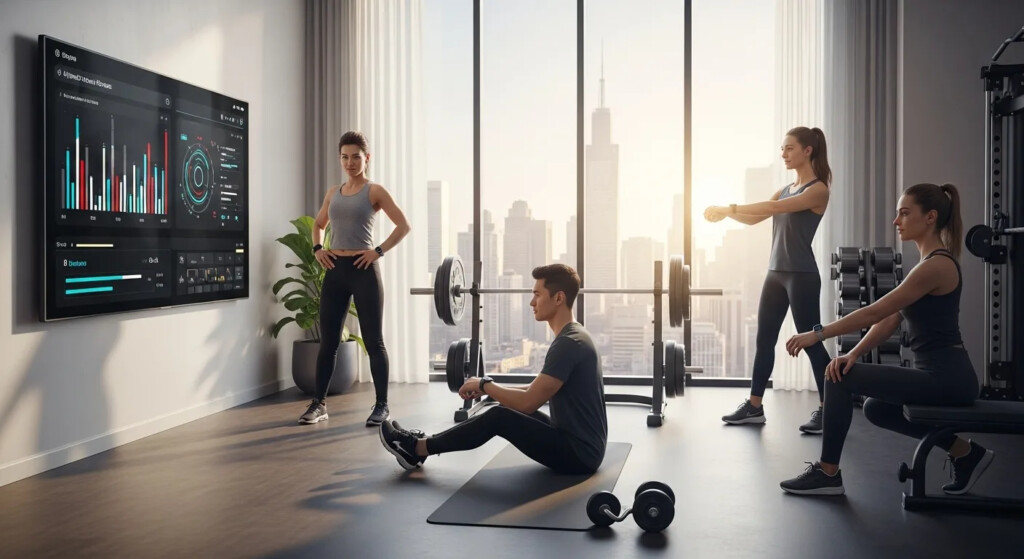
Imagine one clean hub that cuts noise and saves time. That is this page. Skim the key trends. Match them to your goals. Then plug into simple, ready-to-use routines that fit your life.
Here’s the super-simple breakdown of the biggest trends:
- Workout Anywhere, Anytime: Online classes, apps, and workouts you can do at home.
- Smart Gadgets: Watches and trackers that tell you way more than just steps.
- Mix It Up: Combine gym workouts with online ones (if you want!).
- Home Gyms Get Smarter: Equipment that does more and takes up less space.
- Personal Trainers Online: Get expert advice without leaving your house.
- Feel-Good Fitness: It’s not just about muscles; it’s about your mind, too.
- Green Fitness: Making choices that are good for you and the planet.
- More Personalized Training: Having workouts that are optimized to your specific metrics.
- Group Fun: Finding a fitness community, online or in person.
Let’s dive into each trend, and I’ll show you exactly how to use them to reach your fitness goals. No fluff, just real, practical advice.
1. Digital Fitness & Virtual Workouts: Your Living Room, Your Gym

Image Description: A tablet displaying a fitness app. The screen shows a live yoga class with an instructor demonstrating a pose. The app interface includes on-screen metrics like heart rate and calories burned.
Imagine this: you wake up, and instead of rushing to the gym, you open an app on your phone or TV. You’ve got a personal trainer, hundreds of workouts, and a community of people cheering you on – all in your living room. That’s digital fitness! It’s all about convenience and making exercise fit your life.
Why it’s awesome for you (especially if you’re busy!):
- Zero Commute: Save time and gas money. Workout before the kids wake up, on your lunch break, or even in your pajamas. No more excuses!
- Tons of Choices: Yoga, HIIT, strength training, dance… there’s something for everyone, no matter your fitness level or what you enjoy. Bored with one thing? Switch it up in seconds!
- Way Cheaper (Usually): Many apps are much less expensive than a traditional gym membership. Think of all the money you’ll save!
- Find Your Tribe: Online communities let you connect with others, share tips, and stay motivated. You’re not alone on your fitness journey!
- See Your Progress: Track your workouts, see how far you’ve come, and celebrate those wins! It’s incredibly motivating to see your improvement.
How to Get Started (Super Simple):
- Think about what you like to do. Do you love to dance? Do you want to build muscle? Do you prefer calming yoga? Choose an app that matches your interests.
- Read Reviews: See what other people say about the app. Is it easy to use? Are the instructors good? Are there any hidden fees?
- Try a Free Trial: Most apps offer a free trial period. Test it out thoroughly before you commit to paying anything. Make sure it’s a good fit for you.
- Start Small: Don’t try to do too much too soon. Begin with shorter workouts and gradually increase the intensity and duration. Or, start with, Stretching 101: A Beginner’s Guide to Flexibility and Mobility
Example Apps to Check Out (We’re not promoting these, just giving you ideas!):
- Peloton: (Known for cycling, but offers much more, including strength, yoga, and meditation.)
- Apple Fitness+: (Works great with Apple Watch, very user-friendly.)
- FitOn: (Lots of free workouts, great variety.)
- Nike Training Club: (Excellent for different workout styles and levels.)
2. Wearable Technology and Fitness Tracking: Know Your Body Better
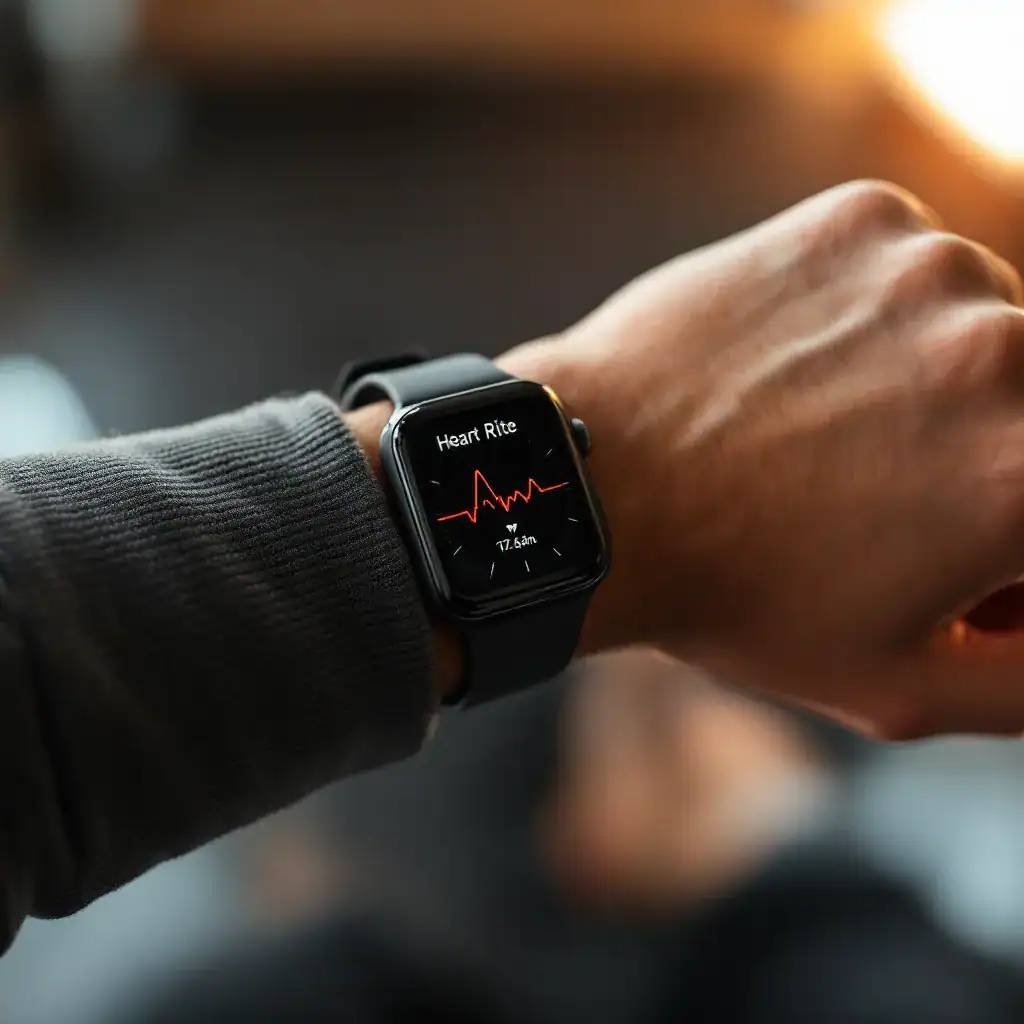
Image Description: A close-up shot of a smartwatch on someone’s wrist. The watch face displays various fitness metrics, including heart rate, steps taken, calories burned, and sleep data.
These aren’t just step counters anymore! Today’s fitness trackers are like mini health dashboards on your wrist (or even in your clothes!). They give you tons of information about your body and how it’s performing.
What they can tell you:
- Heart Rate: How hard you’re working and how well you’re recovering. This is key for avoiding overtraining.
- Sleep Quality: Not just how long you sleep, but how well you sleep (deep sleep, REM sleep, etc.). This is HUGE for recovery and overall health!
- Oxygen Levels: Important for overall health and performance, especially if you’re exercising at higher altitudes.
- Activity Tracking: Steps, distance, calories burned – the basics, but still super helpful for staying active.
- Workout Details: If you run, bike, swim, or do other activities, you can track your pace, distance, speed, and even your power output.
Why it matters: This data helps you train smarter, not just harder. You can see if you’re pushing yourself too much (or not enough!), and you can make changes to your workouts and lifestyle based on real information about your body.
Simple Tips for Using Wearable Data:
- Don’t get obsessed with every number. Focus on the overall trends over time. Are you improving? Are you getting enough rest?
- Learn what HRV (Heart Rate Variability) means. It’s a great indicator of stress and recovery. Higher HRV is generally better.
- Use the data to adjust your workouts. If your HRV is low, take a rest day or do something light. If it’s high, you’re ready to go!
- Track your progress over time. It’s motivating to see how far you’ve come! Use this data to find out how to improve your running technique.
Example Trackers (Again, just ideas!):
- Apple Watch: (Popular, lots of features, integrates well with iPhones)
- Fitbit: (Great for sleep tracking, easy to use)
- Garmin: (Popular with runners and athletes, lots of advanced metrics)
- WHOOP: (Focuses on recovery, used by many professional athletes)
- Oura Ring: (A ring instead of a watch, great for sleep tracking)
3. Hybrid Training: The Flexibility You Need
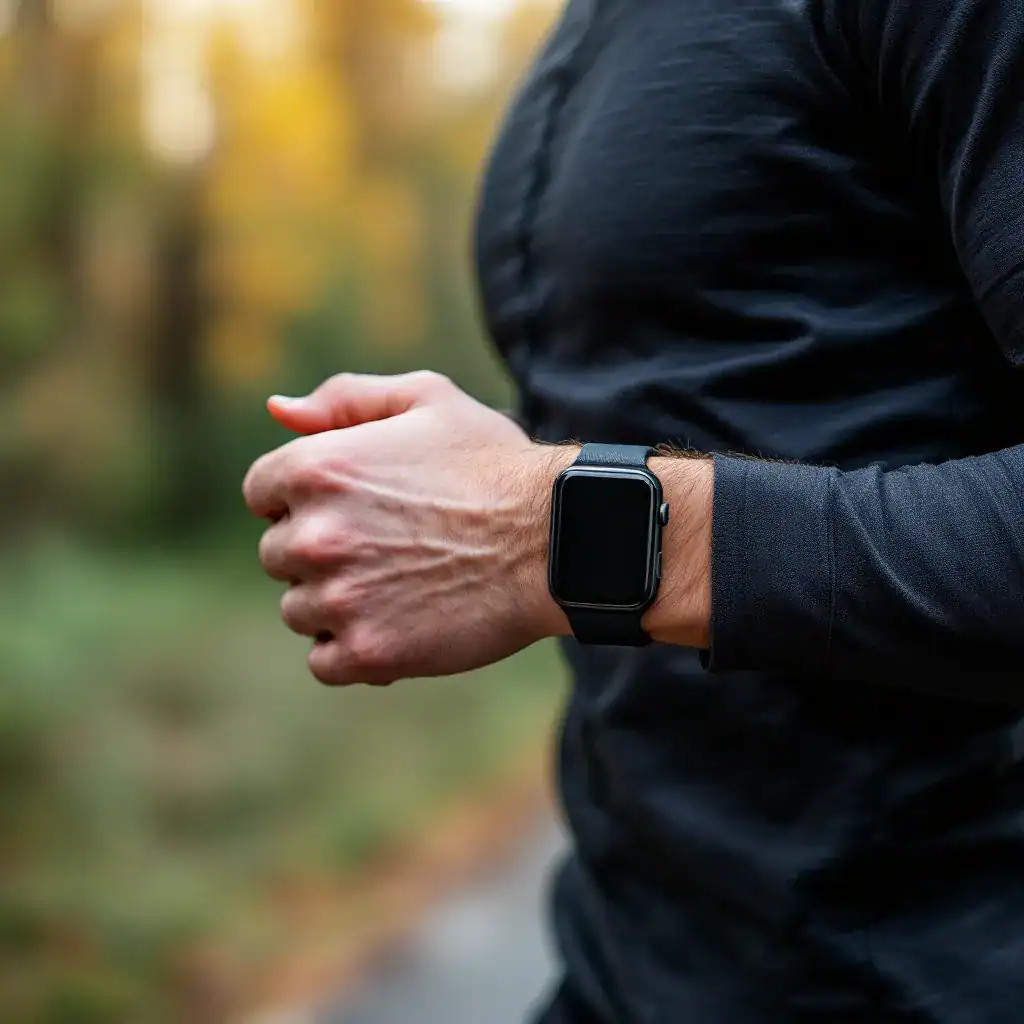
Image Description: A person is working out at home, following a virtual fitness class displayed on a large TV screen. They are using dumbbells and a yoga mat. The room is bright and spacious.
This is all about combining the best of both worlds: the energy of in-person workouts with the convenience of online fitness. You get the flexibility to choose what works best for your schedule and preferences.
Think of it like this:
- Option 1: Gym + Home: Go to the gym for a couple of strength training sessions each week, and do yoga or HIIT workouts at home using an app.
- Option 2: Live Online Classes: Join a live-streamed class from your favorite instructor, so you get that “group” feeling without leaving your house.
- Option 3: Outdoor Fun + Online Support: Join a running group or outdoor bootcamp, and get extra coaching and nutrition tips online.
Why it’s great:
- No more boring routines! Mix and match to keep things interesting and avoid burnout.
- You get the social benefits of group workouts and the convenience of working out at home.
- It’s perfect for busy schedules. You can always find a way to fit in a workout, no matter what.
How to Make it Work:
- Decide what you enjoy doing in person and what you’re happy to do at home. Maybe you love the energy of a group cycling class, but prefer to do yoga in the peace and quiet of your own living room.
- Find a gym or studio that offers a hybrid membership, or look for online platforms that offer live classes.
- Create a schedule that works for you, and stick to it! Consistency is key to seeing results.
4. Home Gym Equipment: Get More, Save Space

Image description: A variety of essential and affordable home gym equipment, including a set of dumbbells, a weight bench, and exercise bands. It should be arranged in a tidy, functional layout.
Forget those bulky, old-school weight machines that take up your entire living room! Home gym equipment is getting much smarter and smaller.
What’s new and cool:
- Fitness Mirrors: These look like regular mirrors, but they display workouts and even give you feedback on your form. (Think of it like having a personal trainer in your mirror!)
- Adjustable Dumbbells: One set of dumbbells that can change weight with a simple twist. Saves tons of space and money.
- Foldable Equipment: Weight benches, treadmills, and even squat racks that fold up when you’re not using them. Perfect for small spaces!
- Smart Bikes and Rowers: These connect to online classes and track your performance, making workouts more engaging.
- Resistance bands: Inexpensive and highly effective for Setting Up a Home Gym: Essential Strength Training Equipment.
Tips for Setting Up a Home Gym:
- Start small. You don’t need everything at once! A set of resistance bands and adjustable dumbbells can go a long way.
- Think about your space. Measure your area and choose equipment that fits. No need to clutter your home.
- Read reviews. Make sure you’re getting good quality equipment that will last.
- Prioritize versatility. Choose equipment that you can use for a variety of exercises.
5. Online Coaching: Your Personal Fitness Guide
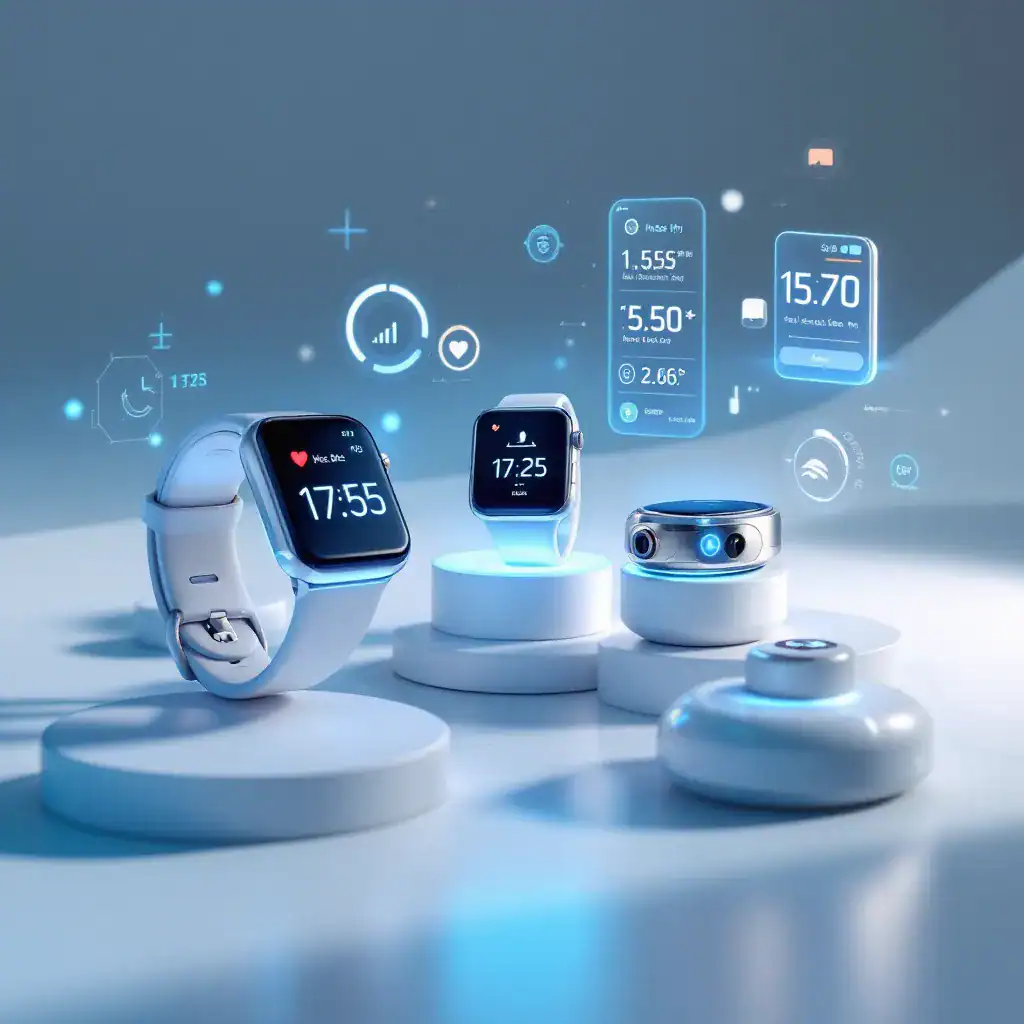
Image Description: A person sitting at a desk, looking at a laptop screen. The screen shows a video call with a fitness coach, who is demonstrating an exercise. The person is taking notes and appears engaged in the session.
This is like having a personal trainer and nutritionist in your pocket! Online coaches create workout and meal plans just for you, check in with you regularly, and help you stay on track.
Why it’s a game-changer:
- Personalized Plans: No more guessing! Your coach will create a plan that’s right for you, based on your goals, fitness level, and any injuries or limitations you might have.
- Accountability: Knowing you have to check in with your coach keeps you motivated. It’s like having a built-in support system.
- Expert Advice: Get answers to your questions and learn the right way to do things, avoiding injuries and maximizing results.
- Flexibility: Work with your coach online, on your own time. No need to travel to a gym!
How to Find a Good Online Coach:
- Look for certifications. Make sure they’re qualified to give fitness and nutrition advice.
- Read reviews and testimonials. See what other people have to say about their experience.
- Have a consultation. Most coaches offer a free consultation call. This is a great way to see if you’re a good fit.
- Ask about their approach. Do they focus on sustainable habits? Do they understand your specific needs (like being a busy parent or having limited space)?
6. Wellness Apps: More Than Just Exercise
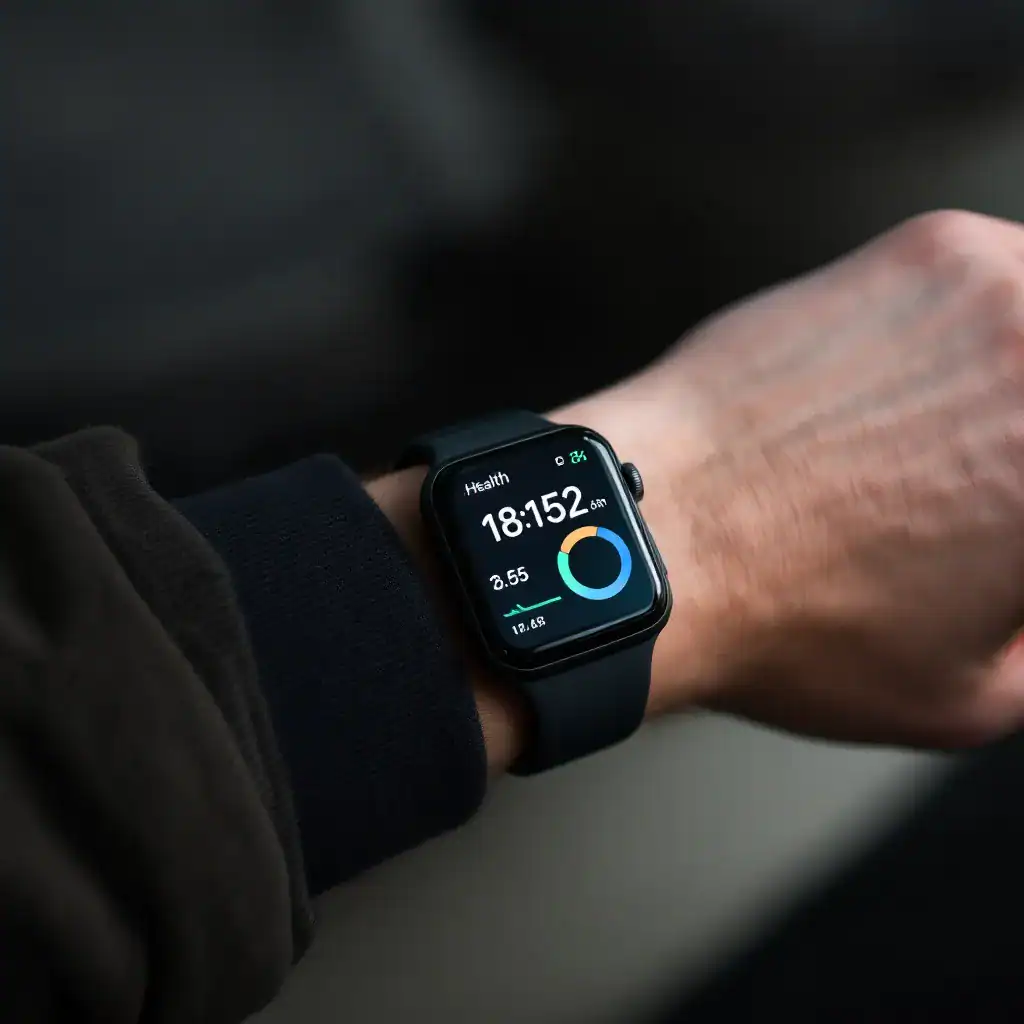
Image description: Showing a variety of different apps for fitness and overall wellness, such as, data tracking, food tracking, sleep tracking, and more.
Fitness isn’t just about hitting the gym. It’s also about taking care of your mind and body in all areas. Wellness apps are expanding to help you do just that.
What they offer:
- Meditation & Mindfulness: Guided meditations to help you relax, de-stress, and improve your focus.
- Nutrition Tracking: Log your meals, track your calories and macros (protein, carbs, fat), and get healthy recipe ideas.
- Sleep Tracking: Monitor your sleep patterns and get tips for better sleep. Quality sleep is essential for recovery and weight loss!
- Habit Tracking: Build healthy habits, like drinking more water, taking breaks from your computer, or practicing gratitude.
How to Use Them:
- Pick one or two areas to focus on. Don’t try to do everything at once! Maybe start with tracking your sleep and adding a short meditation to your day.
- Set realistic goals. Start small and build from there.
- Use the app consistently. The more you use it, the more helpful it will be.
Example Apps (Just a few ideas!):
- Headspace: (Meditation and mindfulness)
- Calm: (Meditation, sleep stories, and relaxing music)
- MyFitnessPal: (Nutrition tracking)
- Noom: (Weight loss program with a focus on psychology)
7. Group Fitness: Find Your Fitness Family (and Have Fun!)
Group fitness is still a great way to get motivated, meet new people, and have fun while working out. But it’s getting even better!
What’s New:
- Outdoor Bootcamps: Get fresh air and sunshine while you sweat! Perfect for those who love the outdoors.
- Themed Classes: Think dance fitness with 80s music, or workouts inspired by your favorite movies.
- Hybrid Options: Many studios now offer both in-person and live-streaming classes, so you can choose what works best for you.
Why it’s Great:
- Motivation: It’s easier to push yourself when you’re surrounded by other people who are also working hard.
- Social Connection: Make friends and find a supportive community. Fitness can be fun!
- Expert Instruction: Learn proper form and technique from qualified instructors.
- Accountability: It’s harder to miss the workout if there are Amazing Facts About Fitness.
How to Find a Great Group Class:
- Think about what you enjoy. Do you love to dance? Do you prefer high-intensity workouts?
- Read reviews. See what other people say about the instructors and the atmosphere.
- Try a drop-in class. Most studios offer a trial class or a drop-in rate so you can try it out before committing to a membership.
8. Functional Training, Recovery & Mindful Movement: Feel Good, Move Better
These three trends are all about taking a holistic approach to fitness. It’s not just about looking good; it’s about feeling good and moving well in your everyday life.
Functional Training:
- What it is: Exercises that mimic everyday movements, like lifting, pushing, pulling, and twisting. Think squats, lunges, and push-ups.
- Why it’s important: It helps you build strength and stability for real-life activities, reducing your risk of injury and making everyday tasks easier.
- How to do it: Focus on exercises that use multiple muscle groups at once. You can use your own body weight, resistance bands, or kettlebells.
Recovery Tools:
- What they are: Things like foam rollers, massage guns, and compression boots that help your muscles recover faster.
- Why they’re important: They help reduce muscle soreness, improve circulation, and prevent injuries. You’ll feel better and be able to train harder.
- How to use them: Use them after your workouts, or on rest days. There are tons of videos online that show you how to use them properly.
Mindful Movement:
- What it is: Practices like yoga, Pilates, and Tai Chi that focus on connecting your mind and body.
- Why it’s important: It improves flexibility, balance, core strength, and reduces stress. It’s a great way to improve your overall well-being.
- How to do it: Find a local class or try an online video. Start with beginner-level classes and focus on your breath and body awareness.
Simple Tip: Try incorporating one of these elements into your routine each week. For example, do a yoga class on your rest day, use a foam roller after a tough workout, or try a functional fitness class.
9. Sustainable Fitness: Good for You, Good for the Planet
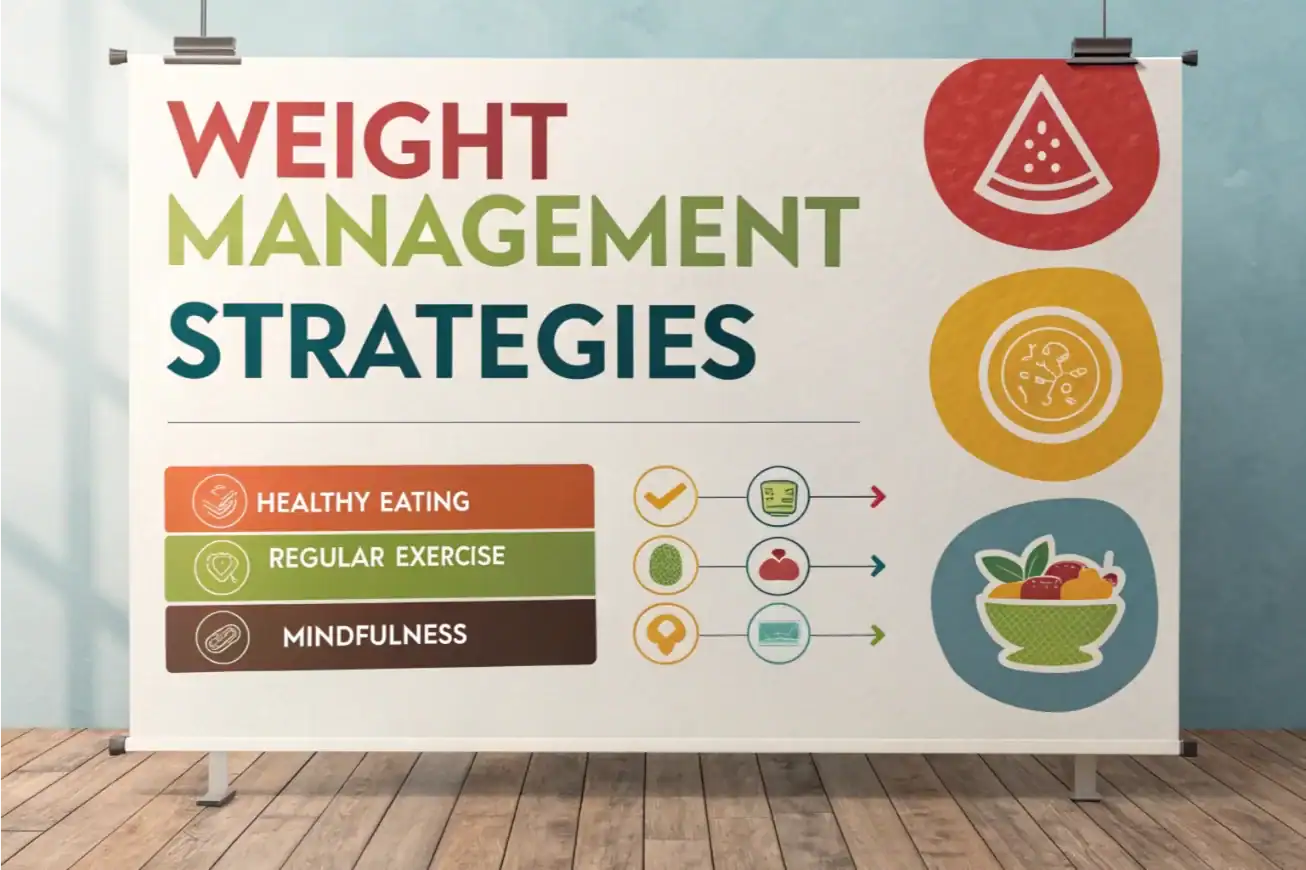
More and more people are looking for ways to make their fitness routines eco-friendly. This is about making choices that are good for your body and the environment.
How to Be a Green Fitness Fan:
- Choose sustainable clothing: Look for brands that use recycled materials or organic cotton.
- Buy used equipment: You can often find great deals on used gym equipment, saving money and reducing waste.
- Walk, bike, or run outdoors: Instead of driving to the gym, get your workout in while enjoying nature.
- Support eco-conscious businesses: Choose gyms and studios that prioritize sustainability, like using energy-efficient equipment or reducing water usage.
How Do You Choose the Right 2025 Fitness Trend for Your Goals and Lifestyle?
Choose the right 2026 fitness trend by starting with your goal, testing it for 30 days, using data from wearables, and checking if it fits your schedule, budget, recovery needs, and personality. If it makes your life simpler, stronger, and more consistent, it earns a spot.
Step 1: Start with the goal, not the hype
The Biggest Fitness Trends only matter if they move one number. Fat loss, muscle growth, performance, mental health, or healthy aging. Pick one primary goal. Everything else is noise.
Ask: “Will this trend help me train better or worse)?” If it’s not an obvious “better,” skip it. Data from 2025 wearables shows adherence beats novelty every time.
Step 2: Match trend to your real life
Trends must fit your schedule, stress, and environment. Hybrid memberships and online workouts work if you’re busy and travel often.
Outdoor training wins if you hate gyms and want more sunlight. If the plan needs a perfect day, it’ll fail. Choose simple, repeatable, boring-effective.
Step 3: Use tech and recovery like a pro
Smart wearables, biohacking tools, and AI coaching should reduce guesswork. Track sleep, workout intensity, and recovery, then adjust quickly.
Build a basic stack before chasing flashy hacks. Protein, creatine, and proven recovery habits beat random chips, cream, or hype supplements. Cross-check options with evidence-based protein picks.
| Goal | Trend to Watch |
|---|---|
| Fat loss | Online workouts + wearables |
| Muscle | Strength blocks + smart recovery |
| Longevity | Zone 2, outdoor walking, biohacking |
Step 4: Run a 30-day experiment
Before you commit, test each trend for 30 days. Measure energy, progress, and recovery after every workout.
If the trend makes your future stronger and more consistent by 2025 and beyond, keep it. If not, cut fast and move forward. Build your next test here.
How Can You Blend Multiple 2026 Fitness Trends Into One Sustainable Routine?
You blend the Biggest Fitness Trends by stacking them into one clear weekly system: hybrid memberships, smart wearables, outdoor sessions, online workouts, biohacking-level recovery, and simple nutrition rules that fit your real life. One rhythm. Low friction. High adherence. Better progress every quarter. That’s sustainable.
Step 1: Anchor Your Weekly Training
Pick four training blocks and stop guessing. Two strength days for muscle, two conditioning days to train heart, lungs, and grit.
Use hybrid memberships to switch between your gym and outdoor workouts. Lock recurring sessions on your calendar before anything else.
Step 2: Use Wearables With A Brain
Wearables, when used right, keep you honest, not anxious. Track sleep, HRV, and training load so you know when to push or pull back.
Compare devices, test accuracy, then commit. Start with a data-focused multisport watch you’ll actually wear.
Step 3: Stack Recovery, Biohacking, and Simple Nutrition
Recovery isn’t a spa day; it’s your progress multiplier. Aim for 7.5+ hours sleep, 8-10k steps on “off” days, and weekly mobility.
Keep biohacking simple: caffeine timing, light exposure, breath work. Use protein, creatine, and smart snacks (yes, protein chips) as your baseline supplement stack, not magic.
| Trend | Action |
|---|---|
| Online workouts | Short, coached sessions for busy days. |
| Outdoor training | One weekly hike or run; protect joints, pick right shoes: evidence-based picks. |
| Wearables | Adjust intensity based on recovery scores. |
Step 4: Review The Data, Not Your Feelings
Every four weeks, ask one question: better or worse? If better, keep the routine. If worse, change one variable, not ten.
This forward system keeps you shaped by data, not hype, through 2025 and beyond.
How Do Sample Weekly Routines Bring the Biggest Fitness Trends to Life?
Sample weekly routines turn the Biggest Fitness Trends from hype into habits by showing you when to train, how to stack wearables, online workouts, outdoor sessions, recovery, and smart supplements so everything compounds. No guesswork. Just clear structure that keeps you progressing, not starting over.
Most people copy random workouts, then blame genetics when they stall. It’s not genetics. It’s chaos. A sharp weekly plan aligns every session with data, sleep, recovery, and your real life.
By 2025, the industry runs on proof, not vibes. Smart wearables track HRV, strain, and sleep; strong routines use those signals before and after each workout. That’s how you train better, not worse).
Example 7-Day “Future. Fit.” Framework
| Day | Focus | Trend Brought to Life |
|---|---|---|
| Mon | Strength + steps | Wearables, muscle focus, hybrid memberships |
| Tue | Online workouts | Coached sessions, data-based progress |
| Wed | Outdoor intervals | GPS, shoe tech, conditioning |
| Thu | Strength + core | Progressive overload, injury prevention |
| Fri | Biohacking light | Mobility, cold/heat, HRV tracking |
| Sat | Outdoor long | Endurance, sunlight, mental health |
| Sun | Recovery | Sleep, reflection, low strain |
Stack protein chips, creatine, and high-quality workout protein after heavy days; skip hype creams that promise magic. Evidence from 2023-2025 meta-analyses keeps creatine ahead, fad powders behind.
Wearables, hybrid memberships, biohacking, and outdoor training work when stitched into one simple, repeatable week. Want gear that matches this forward routine? Start with data-accurate wearables and proven recovery support. Then watch your results compound while these trends shape you, not distract you.
How Should Gyms, Coaches, and Brands Adapt to 2026 Fitness Industry Shifts?
Gyms, coaches, and brands must go hybrid, data-first, and recovery-obsessed or get left behind. Align with the Biggest Fitness Trends shaping 2025: wearables, online workouts, outdoor training, muscle recovery tech, smarter supplement stacks, and biohacking for real results, not noise.
First move: build true hybrid memberships. On-site strength. Online workouts. Outdoor sessions. All tracked. One app. One calendar. One clear path that shows people how they train better or worse) based on choices.
Second: treat wearables as your shared operating system. Sync Garmin, Whoop, Apple Watch data. Reward sleep, steps, and consistency. Link guides to devices with smartwatch breakdowns. People trust numbers; match coaching to those numbers.
Third: go hard on recovery as a growth engine. Promote cold, heat, soft tissue, and sleep scoring. Educate on protein timing, creatine, and smart supplement support backed by ISSN and 2025 meta-analyses. Point members to ranked options via evidence-based reviews.
Smart Product & Service Plays
Stop selling random workout protein chips, cream, or gimmicks. Start curating stacks that match data: intense lifting, outdoor endurance, post-workout recovery, biohacking cycles.
| Shift | Action |
|---|---|
| Wearables | Offer data reviews with monthly training tweaks. |
| Hybrid training | Bundle gym, app, and outdoor meetups. |
| Recovery | Monetize zones, tools, and education. |
Why This Wins Forward
By 2025, industry data shows members who track, get coached, and recover stay longer and spend more. These moves align with the Biggest Fitness Trends, reduce churn, and keep your brand the one people watch as the future gets sharper, faster, and less patient.
How Will Today’s Biggest Fitness Trends Shape the Future of Training Forward?
Today’s Biggest Fitness Trends push training forward by making it more personalized, trackable, and efficient so people can train better, protect health, and keep muscle longer. The risk: lazy thinking, fake “biohacking,” and products that make you weaker, not stronger, over time.
By 2025, wearables and online workouts won’t just track steps. They’ll predict fatigue, guide recovery, and flag injury risk before it happens using real-time HRV and AI.
That data, when used with intent, shapes smarter hybrid memberships. You’ll mix outdoor sessions, strength blocks, and on-demand coaching without skipping what actually works.
Biggest Fitness Trends that actually move you forward
The Biggest Fitness Trends worth your attention share three traits: evidence, consistency, and clear impact on your life, not your feed.
Brands pushing smart wearables, precise workout protein strategies, and validated biohacking protocols are setting the standard the rest of the industry must match.
| Trend | Forward Impact | Watch For |
|---|---|---|
| Advanced wearables | Better sleep, pacing, and injury prevention | See performance-grade tracking |
| Hybrid memberships | Flexible train-anywhere structure | Gyms that blend online and outdoor training |
| Evidence-based recovery | Faster recovery, less burnout | Tools tested in peer-reviewed studies |
Nutrition follows the same rule. People discover which supplement stack actually helps: creatine, quality workout protein, smart carb timing, not empty “protein chips, cream, chips,” hype.
Early 2025 data from ISSN and independent labs shows creatine, whey, and sleep protocols still beat 99% of gimmicks on strength, recovery, and body comp.
The line between better and worse
Used well, these trends help you train harder now and stay strong at 60. Used wrong, they keep you scrolling, buying, and stuck.
The future? Simple: ruthless focus on what’s proven, tracked, and sustainable, so every session shapes you forward, not backward. For gear that fits that standard, start with tested performance tools.You have seen the Biggest Fitness Trends that actually matter. The winning patterns are simple: strength, movement, recovery, and smart tech. The rest is noise. Start with one change this week, not ten. Pick the trend that fits your life, budget, and body. Then build it into a routine you can repeat.
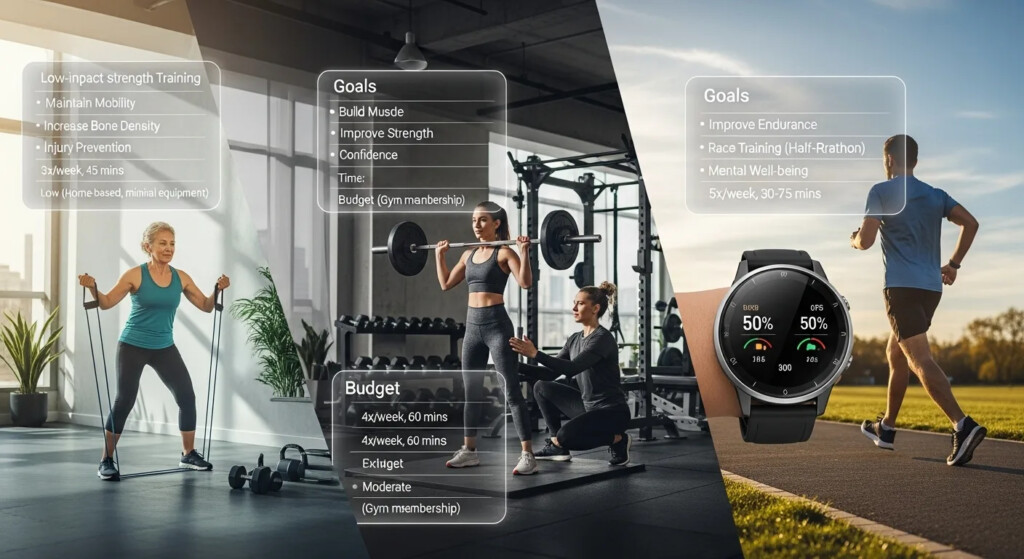
Sustainable habits always beat absurd fads. Choose evidence. Track progress. Adjust forward as your goals and the industry evolve.
Frequently Asked Questions
Are the Biggest Fitness Trends in 2026 legit or just social media hype?
Some of the biggest 2025 fitness trends, like strength training for longevity, beginner-friendly running plans, mobility work, and short, science-backed workouts (e.g., zone 2 cardio, 20–30 minute lifts), are legit and supported by current research. Others—extreme “biohacks,” unsafe detox plans, miracle fat-loss gadgets, and endless “what I eat in a day” content—are mostly hype and can do more harm than good. A quick rule: if it’s sustainable, evidence-backed, clearly explains the “why,” and doesn’t promise overnight results, it’s probably worth trying; if it sounds magical or market-y, skip it.
What is the most effective 2026 fitness trend for fat loss right now?
The most effective 2025 fitness trend for fat loss is “hybrid training,” which mixes short, heavy strength work with quick cardio bursts in the same workout. This combo burns high calories fast, builds muscle (which raises daily metabolism), and fits into 20–30 minute sessions. People pair it with simple protein-focused meals and daily step goals, making it easier to stick to and more effective than long, slow cardio alone.
Which 2026 fitness trends are safest and best for beginners?
The safest and best 2025 fitness trends for beginners are low-impact strength training, walking workouts (including treadmill and outdoor “soft hiking”), short mobility and stretching sessions, and beginner-friendly follow-along apps that offer form videos and progress tracking. These options protect your joints, build a strong base, and fit into busy schedules. Aim for 10–20 minutes a day, focus on good form over intensity, and skip any trend that promises “extreme” results in a week.
Which Biggest Fitness Trends are backed by science and real data?
The strongest science-backed fitness trends today are strength training, especially with weights, high-intensity interval training (HIIT) in short bursts, and daily “NEAT” movement like walking more and sitting less. Studies from 2023–2025 show these methods boost strength, heart health, metabolism, and longevity better than most fads. Zone 2 cardio (easy, steady cardio) is also well supported for fat loss and endurance. Fancy gadgets, extreme detox plans, and miracle workouts rarely match the real-world results of these basics done consistently.
How can people over 40 use 2025 trends without getting injured?
If you’re over 40, treat every 2025 fitness trend as a tool, not a test. Start 20–30% lighter or slower than you think you can handle, and add volume or intensity only if you feel good for two weeks in a row. Warm up for at least 5 minutes, keep 2–3 strength days for joint support, and skip any move that hurts in a sharp or weird way (no ego, no problem). When in doubt, get a quick form check from a certified coach or physio, even online, before you follow viral workouts.
How do I blend AI coaching, wearables, and gym workouts effectively?
Start by letting your AI coaching app set simple, clear goals (like strength, fat loss, or endurance), then sync it with your wearables so all your sleep, steps, heart rate, and workout data flows into one place. Use that data to plan 3–5 focused gym sessions per week, where you train with intent: track your lifts, rest times, and heart rate zones, and let the AI adjust volume and intensity based on your recovery and performance. Check your progress weekly, not daily, and tweak one thing at a time (weight, sets, or pace) instead of chasing every new suggestion. Above all, keep the tech as your guide, not your boss—if your body feels off, dial it back even if the app says “green light.”
Should I use creatine and high-protein snacks to match 2025 trends?
You don’t need creatine or high-protein snacks just to follow 2025 trends, but they can help if they match your goals. Creatine is one of the most researched supplements and can safely support strength, power, and muscle when you drink enough water and stay within the recommended daily dose. High-protein snacks are useful if you struggle to hit your protein needs from meals, but whole foods should still come first. Before adding anything, check your overall diet, any health conditions, medications, and—if unsure—ask a registered dietitian or doctor.
How often will this 2025 Biggest Fitness Trends guide be updated?
We review and refresh the 2025 Biggest Fitness Trends guide at least once a month, and sooner if any major new trend or study breaks. Our team tracks real-time data, expert input, and platform updates, then quickly updates the guide so it never feels stale. You can always check the “Last Updated” date at the top to see when it was most recently reviewed. How to Avoid Injuries While Working Out. If you are just starting, check out: The Beginners Guide to the Gym!
References
- American College of Sports Medicine (ACSM): https://www.acsm.org/
- Centers for Disease Control and Prevention (CDC): https://www.cdc.gov/
- The National Association for Sports Medicine (NASM): https://www.nasm.org/
- The American Heart Association: https://www.heart.org/
- National Center for Complementary and Integrative Health (NCCIH): https://www.nccih.nih.gov/
- American Council on Exercise (ACE): https://www.acefitness.org/
- International Health, Racquet & Sportsclub Association (IHRSA): http://www.ihrsa.org/index.html
Alexios Papaioannou
Mission: To strip away marketing hype through engineering-grade stress testing. Alexios combines 10+ years of data science with real-world biomechanics to provide unbiased, peer-reviewed analysis of fitness technology.
